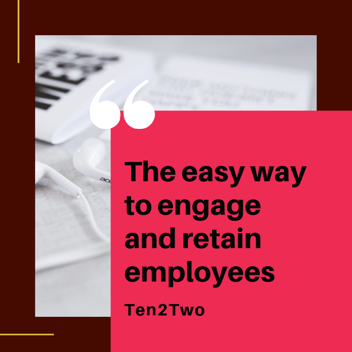How Flexible Working is Shaping Employee Retention for SMEs
In today's competitive job market, attracting the right talent is only half the battle. For SMEs, keeping that talent happy and engaged over the long term is where the real challenge lies. One of the most effective strategies for boosting employee retention is flexible working—and it's no longer just a trend, it’s a crucial part of the modern workplace.
Let’s explore why flexible working has become a game-changer for SMEs and how it can help you retain top talent.
Why Flexible Working Matters More Than Ever
Gone are the days when employees were satisfied with just a good salary. Today’s workforce is seeking a better work-life balance, and they expect their employers to support that. In fact, a recent survey showed that 76% of employees say they would be more loyal to a company if it offered flexible working arrangements. For SMEs, this is a significant opportunity to stand out in the recruitment and retention landscape, especially when competing with larger businesses.
And it’s not just about retaining employees—it’s about attracting them too. 70% of workers believe that flexibility makes a job more attractive, while 55% would consider leaving their current job if flexible working options were not available.
The Impact of Flexible Working on Employee Retention
So why is flexible working so effective when it comes to retention? One word: balance. Employees are increasingly looking for ways to integrate their professional and personal lives, and the businesses that support this are reaping the rewards. Offering remote work, part-time roles, or flexible hours shows that you value your employees' well-being and trust them to manage their time.
It’s not just theory—there’s data to back it up. Companies that offer remote work have seen a 25% reduction in employee turnover. Think about what that means for your business: fewer recruitment drives, lower onboarding costs, and a more stable, experienced workforce.
What Flexible Working Could Look Like for Your SME
The great thing about flexible working is that it’s not a one-size-fits-all model. You can tailor it to meet the needs of both your business and your team. Here are a few options to consider:
• Remote work: Allowing employees to work from home, either full-time or part-time, can be a huge morale booster.
• Flexible hours: Giving employees the freedom to choose when they start and end their workday can help them balance personal commitments.
• Compressed workweeks: Some businesses allow employees to work longer hours for fewer days, offering them more time off without reducing productivity.
Before making the leap, it’s worth assessing which roles within your company are best suited to flexible working. For some positions, remote work may be easy to implement, while others may need more structure. Start with a pilot program and gather feedback from your team to find what works best for your business.
The Bottom Line: Flexibility Equals Loyalty
At the heart of flexible working is trust. By offering your employees more control over when and where they work, you’re demonstrating a commitment to their happiness and well-being. In return, they’re more likely to stay loyal, engaged, and productive.
For SMEs, this kind of loyalty is invaluable. It leads to lower turnover rates, better team cohesion, and ultimately, a stronger business. So if you’re looking to enhance your employee retention strategy, flexible working could be the key.
------------------------------------------------------------------------------------------------------------------------------------------------------------------
Want to Learn More?
If you’re curious about how flexible working could fit into your business, get in touch with us at Ten2Two. We specialise in helping SMEs find the right staffing solutions, including flexible and part-time roles that benefit both employers and employees.


 Back to resources
Back to resources 3 min read
3 min read








